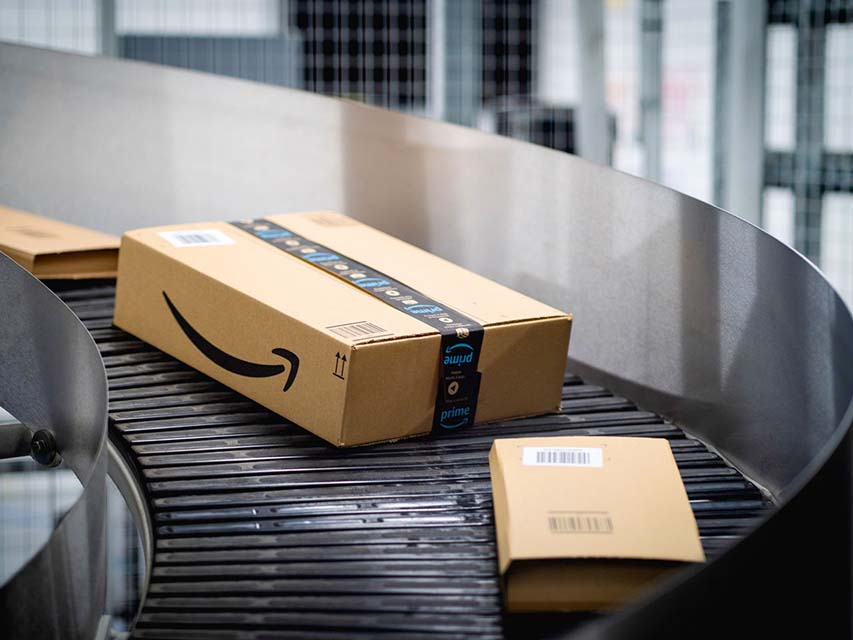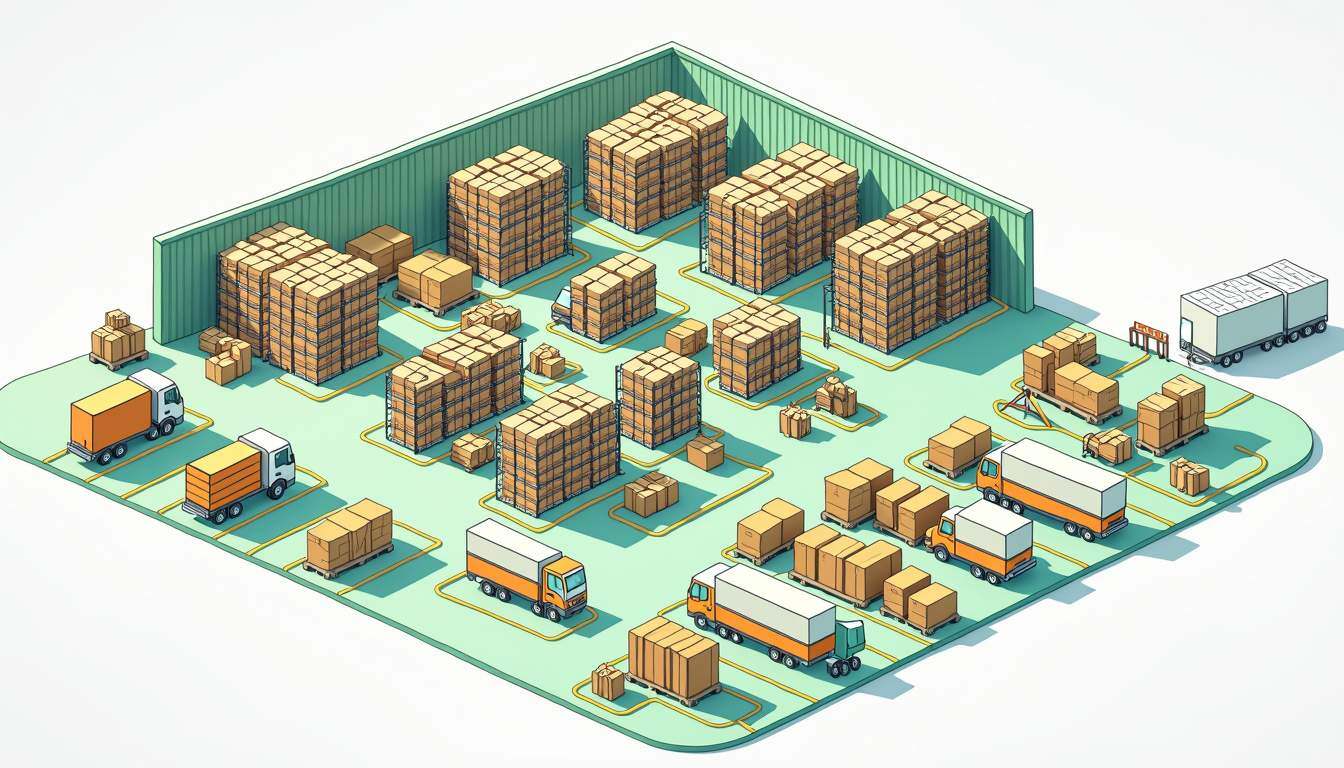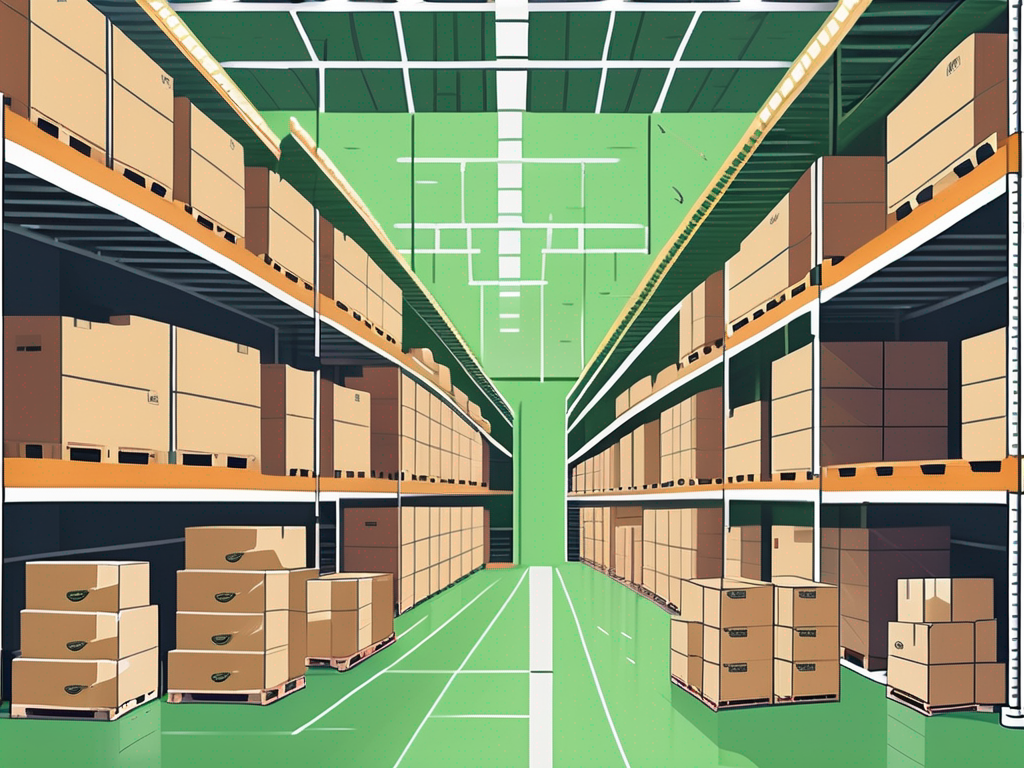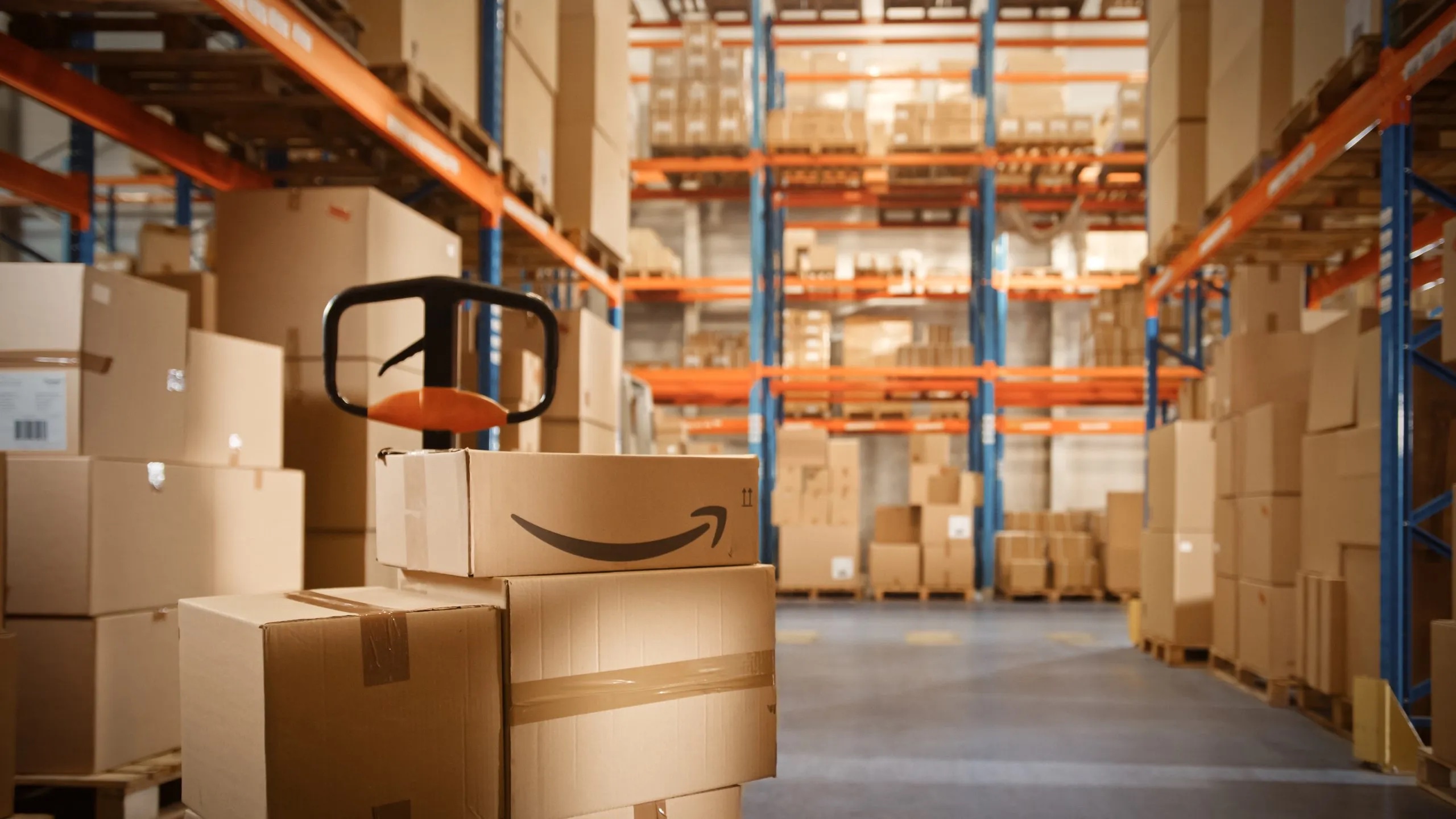Share this
Amazon FBA vs FBM: Which Is Better for Ecommerce Businesses?
by Rin Mosher on Mar. 11, 2024

As the world's largest online marketplace, Amazon is a pre-ordained destination for ecommerce businesses of all kinds. People around the globe recognize the Prime badge, which brings unparalleled reach to millions. However, with great opportunity comes tough decisions to make regarding logistics - specifically when it comes to FBA vs FBM fulfillment services.
In this article, we compare Fulfillment By Amazon (FBA) with Fulfillment By Merchant (FBM) in terms of fees, customer service, and returns. These are three critical factors that can have a significant impact on the ultimate success of an Amazon merchant's business. Being able to understand the differences between these two options will help you choose which fulfillment service is best for your online store.
What Is Fulfillment By Amazon (FBA)?
Fulfillment By Amazon (FBA) is a service offered by Amazon that allows sellers to store and ship their products using Amazon's fulfillment centers.
How Amazon FBA Works
Fulfillment By Amazon allows sellers to outsource the storage and shipping of their products order-related customer service to Amazon. Here's a breakdown of how it works:
1. Merchants Sign Up for FBA
Sellers must first create a seller account on Amazon, after which they can enroll in the FBA program. This involves deciding which products to sell through FBA, as sellers have the option to send some, or all, of their inventory to Amazon's fulfillment centers. Amazon provides guidelines and support for preparing and shipping inventory to their facilities.
2. Inventory Is Shipped to Amazon
After enrolling in FBA, merchants prepare their products according to Amazon’s packaging and FBA prep requirements before shipping their inventory to Amazon’s fulfillment centers. Amazon has specific guidelines on how products should be prepared and shipped to ensure they are stored safely and can be efficiently processed for orders.
3. Orders Are Fulfilled By Amazon
Once the inventory is stored in an Amazon fulfillment center, Amazon will store, pick, pack, and ship orders when they’re placed. Amazon's system automatically handles the logistics of order fulfillment, including determining whether it's eligible for Prime shipping.
4. Merchant Is Responsible for Product Listing and Pricing
While Amazon handles the fulfillment aspect, sellers maintain control over their product listings, pricing strategy, and inventory management. This includes creating detailed product listings with images and descriptions, setting competitive prices, and monitoring inventory levels to ensure they have sufficient stock in Amazon's fulfillment centers.
What Is Fulfillment By Merchant (FBM)?
FBM, or fulfilled by merchant, is a method of fulfilling orders on Amazon where the seller takes complete responsibility for storing, packaging, and shipping the products to customers. Unlike FBA, where sellers send their inventory to Amazon's warehouses and have Amazon take care of the fulfillment process, FBM sellers manage all aspects of order fulfillment themselves.
How Amazon FBM Works
Fulfillment By Merchant is a more complex, but ultimately more flexible option for sellers on Amazon that allows them to retain control over their logistics and order fulfillment process. Here's how it works:
1. Merchants Receive and Store Inventory As It Arrives
Ecommerce brands, either through their own warehouses or via third-party logistics (3PL) providers, manage the initial receipt of their inventory. This step involves offloading the inventory, counting each item for accuracy, and storing everything securely to ensure it's ready for future sales.
2. Seller Lists Products on Amazon Marketplace
Sellers receive and organize their inventory, then list their products for sale on the Amazon marketplace. They're responsible for setting their own prices, determining handling fees, managing shipping, and providing customer service.
3. Customer Places an Order
The seller is notified as soon as someone places an order on Amazon. This kicks off the main fulfillment process, which includes selecting the product from their inventory (picking), packaging it securely (packing), and sending it off to the customer (shipping). Sellers have complete oversight and control over shipping times, customer service interactions, and managing returns, ensuring a direct relationship with their customers throughout the transaction.
Comparing Amazon FBA vs. FBM
The FBA vs FBM dilemma is a big one for ecommerce brands as they expand their presence into new online marketplaces. Both options have pros and cons. Whether Amazon fulfillment or in-house/outsourced fulfillment is best for you will depend on factors such as cost, control, and flexibility. Below, we go over the key differences between FBA and FBM to provide insight into which of the fulfillment methods makes the most sense for your business.
Fulfillment Process
The biggest difference between Amazon FBA and Amazon FBM is the fulfillment process itself. With FBA, businesses delegate all the work involved to Amazon's existing infrastructure and staff. This eliminates the need to handle storage and order processing in-house and reduces strain on internal operations.
Fulfillment By Amazon is best for those who don't have the time or resources to undertake fulfillment on their own. It also works well for businesses that prefer the convenience of a managed solution that's specifically built for Amazon ecommerce sales.
On the other hand, FBM can make more sense when a company wants more control over its inventory's storage and management. The scale of Amazon’s fulfillment service creates potential quality concerns, as products may not be managed with the same level of care that a business would give its own merchandise.
FBA can also make order fulfillment more complicated when selling on multiple ecommerce platforms. The extra work that comes with splitting up and managing inventory across several warehouses may not be worth the benefits of Amazon’s fulfillment services. And while FBA outsources much of the work involved in order fulfillment, companies will still need to prepare shipments in accordance with Amazon’s strict prep guidelines.
3PLs offer a happy medium between these two options, handling order fulfillment for both Amazon and other online sales channels on ecommerce brands’ behalf. Businesses benefit from the help of an outsourced merchant fulfilled network without having to worry about putting their inventory in more than one place. Most 3PLs that have experience with Amazon order fulfillment also offer FBA prep, so even if you decide you want to fulfill your Amazon orders from the Amazon warehouse, your 3PL can handle that, too.
Fees and Costs
As a managed service, FBA offers merchants little wiggle room with cost. Amazon charges monthly storage fees and FBA fees based on the specific item at hand. Factors like category, weight, and size can vary the amount businesses pay - between 6% and 45% of a product's sale price.
'Bulky' orders cost more than regular ones because they require more labor to process. Amazon can also apply additional inbound placement, removal, and disposal fees when it deems necessary.
This can make things extremely complicated depending on what a company sells. For example, a skincare brand using FBA for fulfillment could pay anywhere between $3.22 for 1 oz. face serums to $6.39 for 2.5 lb bottles of body cream. This is an addition to other potential charges, like long-term storage fees.
Predicting these costs can be difficult for businesses, especially smaller ones with limited resources and budget. The fees would affect the skincare brand's profits as well. If their average profit margin is $10 per unit, then FBA fees could potentially consume up to a third of their profits.
FBM comes with the advantage of being able to explore cost-saving opportunities through alternate staffing and shipping arrangements. It can be just as expensive as FBA if a company doesn't have the infrastructure to process large order volumes on its own.
Outsourcing ecommerce fulfillment to a 3PL eliminates the up-front cost of establishing your own FBM fulfillment process - and could even save you money long-term if you partner with a well-established 3PL that can negotiate carrier shipping rates for you.
Consistency of Performance
To expand on the previous point, fulfillment isn't an inherently error-free process. Quite the opposite; big companies like Amazon invest millions of dollars into automated order processing systems, warehouse management software, and employee training to operate as seamlessly as they do. Businesses handling fulfillment themselves will need to invest in similar systems to perform on the same level.
The main challenge with Amazon Prime fulfillment service is that because it’s so large-scale, quality control is more likely to fall through the cracks. With FBM, either in-house or through a reliable and dedicated 3PL partner, you’re able to maintain more control over performance quality.
Reliable and accurate order fulfillment makes a big difference to the perception of your brand and the satisfaction of your customers. Similarly, consistently damaged or incorrect orders can ruin the trust you have with your customer base.
Customer Service
When ecommerce brands delegate order fulfillment to Amazon, they sign off much of their control over customers' experience. This includes virtually all communications post-sale. Amazon expects buyers to reach out to them rather than FBA sellers if any issues arise with an order.
Amazon's customer service department accepts communications by phone and charges brands a monthly fee based on the number of inquiries handled during that period. It seems like a foolproof solution from the outside in - why not just delegate support to a company with existing call centers?
The answer is service quality. It goes without saying that customer care is one of the most important aspects of retention and repeat sales in ecommerce. Having an outside company handle it means trusting they’ll know just as much about your brand and products as a dedicated employee.
Customer Service by Amazon is also exclusive to purchases made on that ecommerce platform.
If you sell on other channels, you will still need some sort of service team in-house. This again raises the issue of quality, as customers may have different experiences depending on which team they contact.
While in-house support requires more work, it gives businesses control over how tickets are managed. Brands have full visibility into buyers’ needs, pain points, and problems, and are better equipped to address them as a result.
Order Returns
Storing, picking, packing, processing, and shipping ecommerce orders may seem like a lot, but it's only half the battle. Ecommerce returns management, also called reverse logistics, is an often-overlooked aspect of fulfillment that involves receiving and inspecting packages returned by customers.
People send online purchases back for a number of reasons, from incorrect sizing to product defects. Having a system in place to work through these returns is crucial to minimizing loss and ensuring buyer satisfaction.
FBA offers brands a basic solution to returns by handling the reverse logistics process on their behalf. Amazon takes on the responsibilities of handling returns by accepting and processing packages and restocking inventory. This is a huge benefit for businesses that don't have the resources or expertise to manage returns themselves.
The main drawback is that it’s often rushed. Amazon processes extremely high volumes of returns on a daily basis, which means staff have less time to thoroughly review items to ensure they meet proper criteria.
Sellers don’t have control over whether returns are accepted, and likewise don’t get much insight into why aside from generic labels like “Defective” and “Customer Damaged.” Depending on its condition, an item may be put back in regular inventory, sold at a discounted price through Amazon Warehouse, or discarded.
This is all paid for by the merchant through processing fees, disposal fees, and account balance adjustments. The lack of involvement can be frustrating for businesses, as costs may add up quickly without oversight into or say over how stringently returns are reviewed.
Choosing to go the FBM route requires companies to handle all aspects of reverse logistics on their own, which can be difficult with limited in-house resources or high volumes of packages. But at the same time, it gives brands more control over the reverse logistics process.
Outsourced 3PL services offer a particularly convenient solution where returns are handled by logistics experts according to each individual business’ return policies and procedures. This takes the burden off of sellers’ shoulders while promising better accuracy that can ultimately cut waste and save money.
Making a Decision on FBA vs. FBM
Both FBA and FBM have their own advantages and drawbacks. What makes one the right fulfillment method for your business ultimately depends on its individual needs and goals. If you don’t have special requirements or lack resources in-house, then FBA may be the better option for you. However, if you'd like more control over your fulfillment process and a potentially lower cost structure, then FBM may be the way to go.
Shipfusion offers the perfect solution to Amazon seller-fulfilled Prime orders - all the experience, staff, and infrastructure, but offered to you on an individual scale. Take advantage of a dedicated Account Manager who will work with you to understand your business and create a custom fulfillment solution that meets your unique needs. With our cutting-edge technology, we can ensure faster delivery times, accurate inventory management, and seamless integration with ecommerce platforms like Amazon and beyond. Contact a member of our team to get started today.
Share this
You May Also Like
These Related Articles

How Does Amazon Fulfillment Work?

Top FBA Prep Providers: Streamline Your Amazon Business Today

Amazon FBA Prep Requirements: Complete Guide For 2024
- August 2025 (8)
- July 2025 (16)
- June 2025 (22)
- May 2025 (27)
- April 2025 (27)
- March 2025 (26)
- February 2025 (26)
- January 2025 (34)
- December 2024 (16)
- November 2024 (22)
- October 2024 (22)
- September 2024 (27)
- August 2024 (9)
- July 2024 (8)
- June 2024 (5)
- May 2024 (8)
- April 2024 (7)
- March 2024 (6)
- February 2024 (6)
- January 2024 (5)
- December 2023 (3)
- November 2023 (3)
- October 2023 (5)
- September 2023 (4)
- August 2023 (2)
- July 2023 (1)
- June 2023 (4)
- March 2023 (2)
- October 2022 (1)
- September 2022 (5)
- August 2022 (4)
- July 2022 (7)
- June 2022 (4)
- May 2022 (4)
- April 2022 (6)
- March 2022 (2)
- February 2022 (1)
- January 2022 (3)
- December 2021 (2)
- November 2021 (4)
- October 2021 (2)
- September 2021 (5)
- August 2021 (4)
- July 2021 (4)
- June 2021 (3)
- May 2021 (2)
- April 2021 (3)
- March 2021 (3)
- February 2021 (3)
- January 2021 (2)
- December 2020 (4)
- November 2020 (2)
- October 2020 (4)
- September 2020 (2)
- July 2020 (5)
- June 2020 (4)
- May 2020 (2)
- April 2020 (2)
- March 2020 (4)
- February 2020 (1)
- December 2019 (1)
- May 2018 (1)
- March 2018 (2)
- February 2018 (3)
- January 2018 (3)
- November 2017 (3)
- July 2017 (4)
- March 2017 (3)
- February 2017 (5)
- January 2017 (3)
- December 2016 (4)
- November 2016 (6)
- October 2016 (6)
- October 2015 (1)
- September 2015 (1)
- June 2015 (3)
- May 2015 (3)
- August 2014 (1)
- July 2014 (1)
- March 2014 (1)
- February 2014 (1)